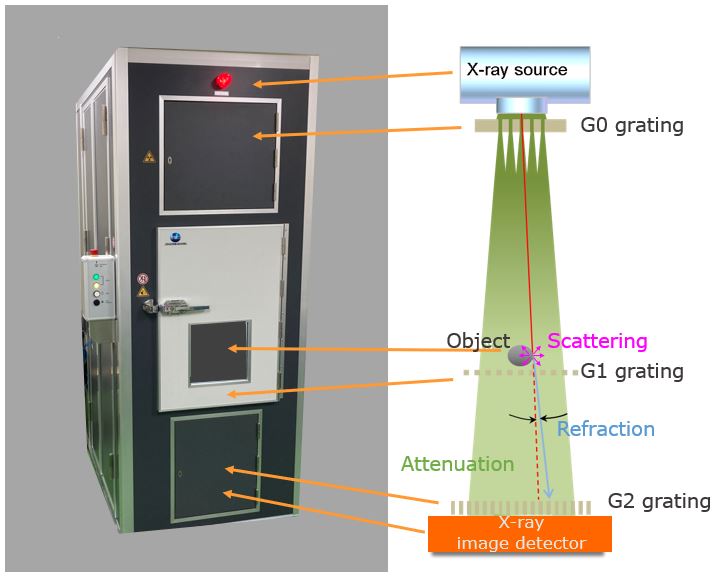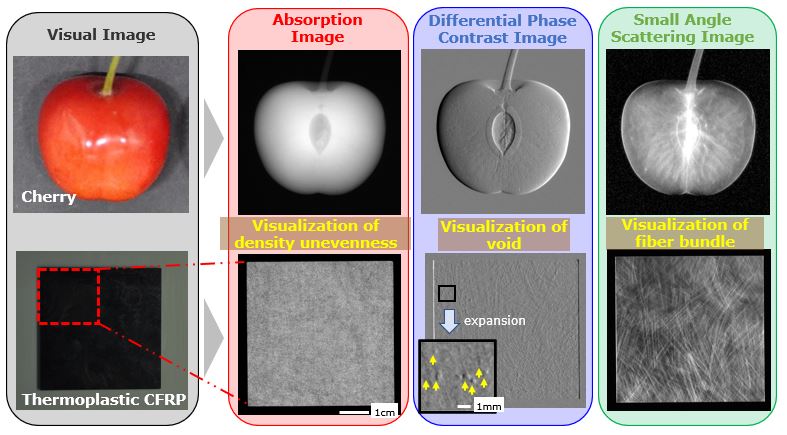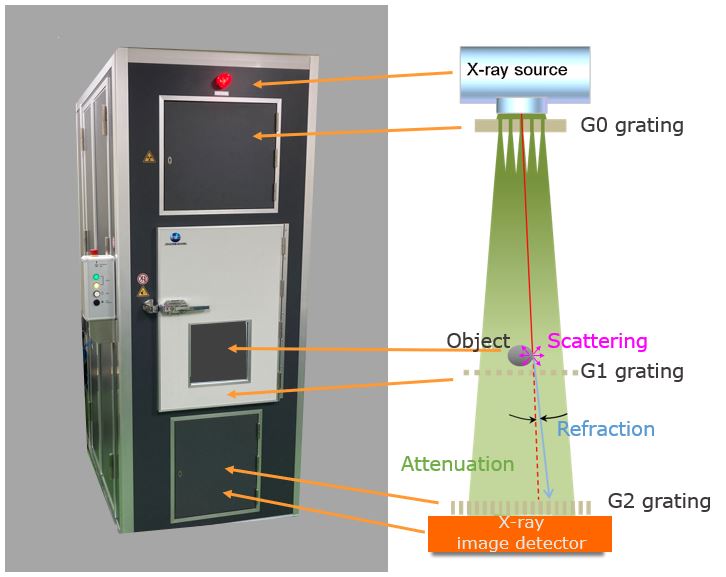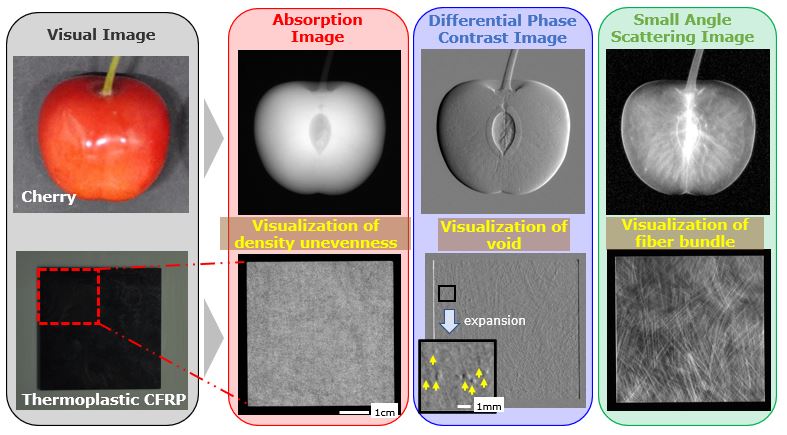News Releases
Konica Minolta’s XtraLINQ Talbot®, an X-ray Talbot-Lau Interferometer, Wins the Product and Technology Award from the Society for the Advancement of Material and Process Engineering
Nondestructive Inspection Contributing to Research of Carbon Fiber Reinforced Plastics
September 26, 2023
Tokyo (September 26, 2023) - Konica Minolta, Inc. (Konica Minolta) today announced that the Company’s XtraLINQ Talbot®, an X-ray Talbot-Lau interferometer, won the Product and Technology Award from the Society for the Advancement of Material and Process Engineering (SAMPE) Japan,1) a prominent industry organization related to the development of advanced material engineering. The commendation ceremony was held at the Hongo Campus of the University of Tokyo on September 25, 2023.
XtraLINQ Talbot® is an X-ray interferometer using the Talbot-Lau interference principle. Attenuation, refraction, and scattering, which occur when an X-ray beam penetrates through an imaging target, are presented as images to visualize light elements and scattering objects in the order of several μm,2) which were invisible previously. XtraLINQ Talbot® won the award because its significant contribution to research on carbon fiber reinforced plastics (CFRP) was highly evaluated.
The Product and Technology Award is conferred on a new product or technology which excels in terms of originality, engineering, and commercial value and is derived from a new material or process among new products or technologies that are presented or exhibited at lectures or exhibitions organized by SAMPE Japan.

Commended Product/Technology
XtraLINQ Talbot®, an X-ray Talbot-Lau interferometer
Reason for Recommendation
Konica Minolta was among the first in the industry to develop an X-ray interferometer by using Talbot-Lau interference. The interferometer makes it possible to accurately and quickly determine the state of fibers inside CFRP in a nondestructive manner for a large area. Notably, XtraLINQ Talbot® enables nondestructive acquisition of information that is closely related to physical properties, such as local fiber volume, fiber distribution, and fiber orientation, inside randomly oriented discontinuous CFRP. It also discovered the possibility of predicting the fracture behavior of CFRP, thereby contributing significantly to research on CFRP.
XtraLINQ Talbot®, an X-ray Talbot-Lau Interferometer
XtraLINQ Talbot® has three gratings between the X-ray tube and the image detector: G0, G1, and G2. The G0 grating enhances the X-ray interference. When an X-ray with enhanced interference hits the G1 grating, an interference pattern is formed at the position of the G2 grating due to interference. This pattern changes depending on the presence of an object. The difference is detected and calculated to create an absorption image, differential phase contrast image, and small angle scattering image.

The three images, which are created by phase contrast imaging technology using the Talbot-Lau interferometer, have the following features.
Absorption image: Excels in detecting metallic foreign matter, which has a high X-ray absorption
Differential phase contrast image: Superb in rendering light elements, such as polymers and carbon fibers, by presenting small angles of refraction as images
Small angle scattering image: Capable of producing images of small particles or fiber bundles of several μm that are smaller than the pixel size
Utilization of CFRP for Research and Market Deployment
There are growing expectations for the use of CFRP for tough and lightweight components for mobility, including aircraft and vehicles. To reduce cost, which is the key to commercialization, efforts have focused on developing and utilizing new forming methods. In research to develop manufacturing methods or in inspections at production sites, a way of determining the orientation of fibers inside CFRP for a large area and predicting strength is required. Large-area fiber orientation images created by XtraLINQ Talbot® visualize and quantify the orientation of fibers inside CFRP and are used as input information for AI training, enabling AI-based prediction of strength. XtraLINQ Talbot® is expected to be used in the development of composite materials, including CFRP, and of components whose environmental impact is low.
Konica Minolta remains committed to applying the technology to composite materials in general, including CFRP, and meeting society’s needs to make predictions based on nondestructive solutions.
1) Society for the Advancement of Material and Process Engineering (SAMPE) Japan:
This is the Japan chapter of SAMPE (SAMPE Global), which is headquartered in the U.S. It provides opportunities for the collection and exchange of information on research and development, production, usage, and education, as well as for discussions and tours, mainly focusing on technologies related to materials, processing, and applications.
2) μm: micrometer = 1/1,000 millimeter


